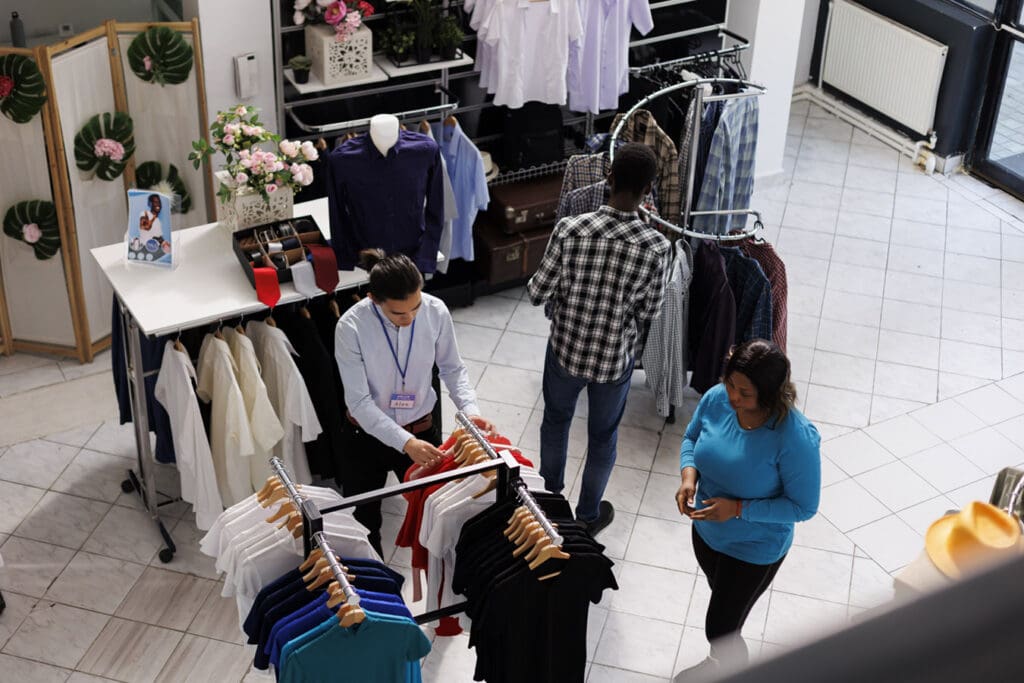At KT Connections, we’re witnessing a transformative shift in how businesses approach physical security. Artificial Intelligence (AI), particularly through machine learning, is redefining video surveillance, access control, and environmental monitoring. The primary advantage lies in AI’s ability to enable automation that actively prevents incidents before they occur, proactively addressing risks. Our clients are leveraging these advanced tools to tackle common security challenges, optimize operations, and build data-driven insights. This blog dives deep into how AI enhances physical security, mitigates prevalent issues, and empowers businesses with actionable analytics.
Why Businesses Upgrade Physical Security Systems
Businesses often face recurring issues that prompt the installation or upgrade of physical security systems. These challenges, both inside and outside facilities, include:
Vandalism: Graffiti, property damage, or loitering near entrances are common external threats. For instance, retail stores have reported increased vandalism during late-night hours, necessitating robust surveillance to deter and detect such activities. AI-powered cameras enhance deterrence by recognizing individuals and details like clothing color. If an individual approaches a building after hours, the system can trigger a Visual Alerter to flash a bright color and activate an alarm or announcement, such as, “You in the red, leave the area, security is on the way,” effectively discouraging potential vandals.

Protecting People and Products: Employee safety and inventory protection are critical, especially in sectors like manufacturing or retail. Warehouses require stringent access control to safeguard high-value equipment. Integrating audio monitoring into AI-powered systems further enhances security by detecting events like gunshots or aggressive behavior, automatically triggering alerts to notify security personnel or law enforcement, ensuring rapid response to potential threats.

AI addresses these issues by providing real-time threat detection, reducing false alarms, and analyzing patterns to ensure proactive responses. By integrating machine learning, businesses can transform security from reactive to predictive, enhancing safety and efficiency.
The Power of Machine Learning in Physical Security
Machine learning, a cornerstone of AI, processes vast amounts of data from cameras, sensors, and other systems to deliver actionable insights. Here’s how it tackles key security and operational needs:
Foot Traffic Analysis
Machine learning tracks the number of people entering and exiting a building, helping businesses manage occupancy. For retail stores, this data predicts busy periods, ensuring adequate staffing and security during high-traffic events like Black Friday sales.
Environmental Monitoring
AI-powered systems can detect smoke or fire with up to 98.5% accuracy, distinguishing hazards from benign conditions like fog. The most significant application is vape and smoke detection, particularly in schools, where identifying such activities ensures student safety and compliance with regulations. This capability is also critical for warehouses storing flammable materials, reducing false alarms and ensuring rapid response to real threats.
Traffic and Vehicle Monitoring
By analyzing car quantities in parking lots, AI optimizes space usage and identifies unauthorized vehicles. For example, office complexes use this data to enhance security while ensuring parking availability during peak hours. AI can also activate a visual system, such as illuminated signs or displays, to clearly indicate parking availability, improving user experience and streamlining traffic flow in busy lots.
People and Car Quantity Insights
Machine learning integrates data from multiple sources—cameras, access control systems, and IoT devices—to provide a comprehensive view of activity. This holistic approach helps businesses understand usage patterns and adjust security protocols accordingly. Additionally, queue monitoring can send announcements or notifications to staff when more assistance is needed for checkout lines or customer service, ensuring efficient operations during peak times.
These capabilities enable businesses to build trends, analytics, and event predictions, transforming raw data into strategic insights. For instance, analyzing entry/exit patterns can help a retailer forecast customer flow, improving both security and customer experience during sales events.
Building Trends and Analytics for Business Success
AI’s ability to process and analyze large datasets empowers businesses to develop trends and analytics that drive security and operational strategies:
Trend Building: By examining historical data, AI identifies patterns, such as increased vandalism incidents during winter months. This allows businesses to deploy preventive measures, like enhanced lighting or patrols, before issues escalate.
Business Expectations: Machine learning forecasts busy periods based on foot traffic and vehicle data, helping businesses plan staffing, inventory, and security. For example, a restaurant can use these insights to prepare for seasonal rushes.
Security Trends: AI detects emerging threats, such as new vandalism tactics, by analyzing anomalies in video feeds or access logs. This adaptability ensures security systems remain effective against evolving risks.
Event Trends: By correlating data from surveillance, access control, and environmental sensors, AI predicts potential events, like overcrowding risks in a retail store. This foresight improves response times and enhances safety.
The impact of these capabilities is evident in market trends. The AI in Security Market is projected to grow from USD 30.02 billion in 2025 to USD 71.69 billion by 2030, with a CAGR of 19.02%. Similarly, the physical security market is expected to reach $211.67 billion by 2030, driven by AI advancements. These figures underscore the growing reliance on AI to address security challenges.
Real-World Applications
The practical benefits of AI-powered security are clear in real-world deployments.
A&B Welding Supply: Partnering with KT Connections, A&B upgraded to an AI-enhanced video surveillance system. The solution reduced security incidents by detecting suspicious activities in real-time and provided insights into parking lot traffic, optimizing space usage and enhancing operational efficiency.
Oakland International Airport: Using an AI-based system, the airport combines threat detection with facial recognition, streamlining security for 13.2 million passengers annually while maintaining robust safety standards.

These examples highlight AI’s versatility, from local businesses to large-scale operations, in addressing unique security and operational needs.
Enhancing Operations Beyond Security
AI’s benefits extend beyond security, optimizing broader business operations:
Parking Lot Management: By monitoring vehicle quantities, AI ensures efficient use of parking spaces, critical for retail and office settings during peak times. This also enhances security by identifying unauthorized vehicles.
Capacity Planning: Foot traffic analysis helps businesses manage building occupancy, ensuring compliance with safety regulations and improving customer experiences during high-traffic periods.
Operational Efficiency: Predictive analytics enable businesses to allocate resources effectively, reducing costs and improving service delivery. For instance, a retailer can adjust staffing based on predicted customer flow, minimizing wait times.
The Future of AI in Physical Security
As AI continues to evolve, its integration with technologies like IoT and cloud-based systems creates comprehensive security ecosystems. For example, AI-powered access control using biometric data ensures secure entry, while environmental monitoring detects hazards like smoke or flooding. The convergence of physical and digital security, a key trend in 2025, enhances real-time responses and threat intelligence.
Looking ahead, businesses can expect increased investment in security technologies, with an 8% rise in commercial building projects in 2025, including AI-driven solutions. Compliance with data privacy regulations, particularly around facial recognition, will also shape adoption, ensuring user-friendly and ethical implementations.
At KT Connections, we’re committed to helping businesses harness AI to address security challenges and optimize operations. Our tailored solutions leverage machine learning to detect threats, reduce false alarms, and provide actionable insights, ensuring your premises are safe and efficient.
Ready to transform your physical security? Contact KT Connections today!
